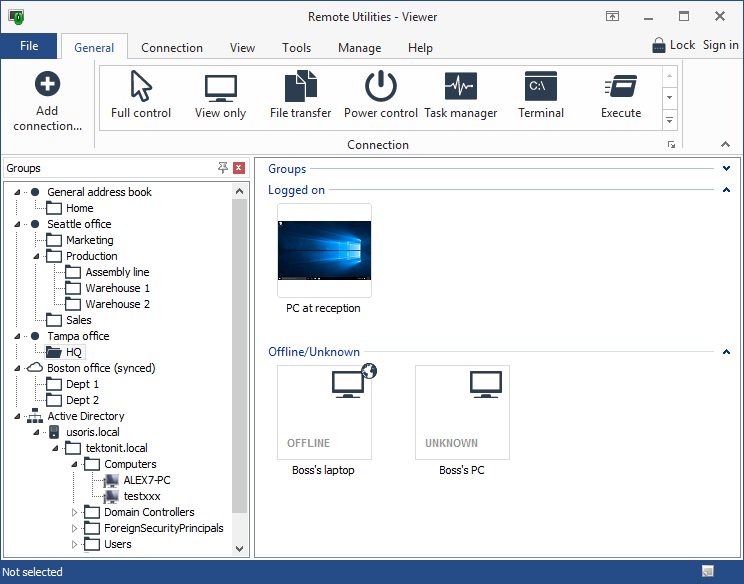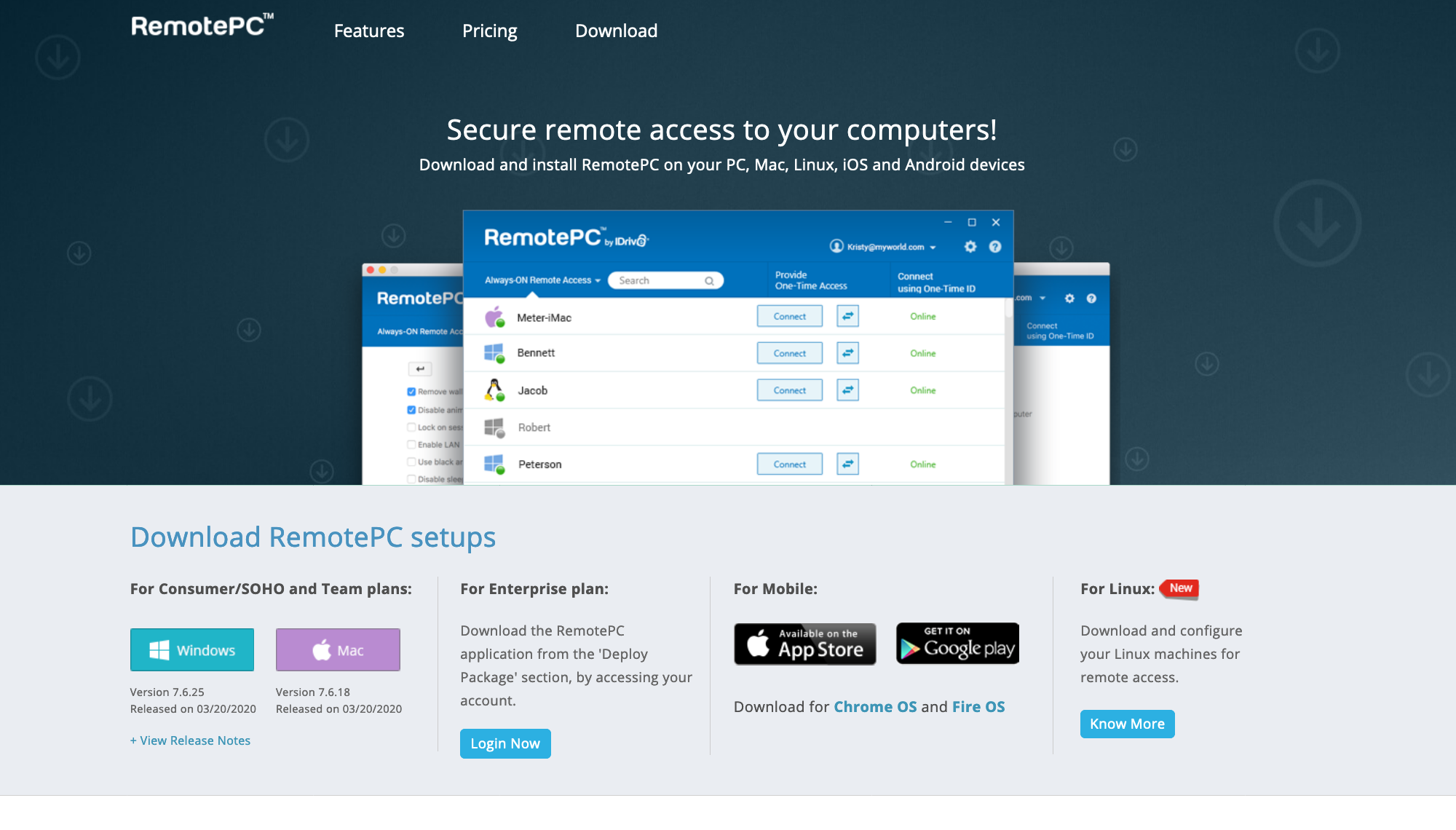

- #REMOTE UTILITIES REVIEWS FOR MAC#
- #REMOTE UTILITIES REVIEWS INSTALL#
- #REMOTE UTILITIES REVIEWS ANDROID#
- #REMOTE UTILITIES REVIEWS SOFTWARE#
- #REMOTE UTILITIES REVIEWS PC#
The one-time purchase is great for businesses that prefer to pay a one-time, upfront fee rather than annual or monthly subscription fees.
#REMOTE UTILITIES REVIEWS SOFTWARE#
The multilingual software has optimal security measures, customizable integrations and competitive management tools to enhance any remote session.
#REMOTE UTILITIES REVIEWS PC#
#REMOTE UTILITIES REVIEWS INSTALL#
You can run the Host app without having to install it, which means that you can provide spontaneous support.Remote Utilities works well behind routers, so you don't need to make any port forwarding changes to your router's settings.You can view a remote screen in View Only mode so that you don't interfere with anything on the remote computer.You can launch the Viewer and Host apps from a USB drive (like a flash drive) without having to install software.It works with 32-bit and 64-bit versions of Windows 11, Windows 10, Windows 8, Windows 7, Windows Vista, and Windows XP Windows Server 2019, 2016, 2012, 2008, and 2003 and in beta form for macOS and Linux.To find out more about Remote Utilities for Windows' competition, read our Best remote desktop software guide. Meanwhile, TeamViewer charges $49 per month for one user and one concurrent session or $199 per month for unlimited users and three concurrent sessions. GoToMyPC charges $33 to $35 per technician license per month for an unlimited number of endpoint computers. Both of these platforms offer much of the same functionality as Remote Utilities, including drag-and-drop file transfer, screen recording, and audio sharing.īut, they can also be much more expensive. If you need a remote desktop on Mac computers, it’s worth looking into GoToMyPC or TeamViewer. Remote Utilities for Windows: The competitionĪrguably, the biggest downside to Remote Utilities is that it only enables you to connect to Windows computers.
#REMOTE UTILITIES REVIEWS FOR MAC#
While it would be much better if this platform had support for Mac and Linux computers, that shouldn’t be a dealbreaker if your company primarily runs on Windows devices. I believe that the main thing is the fact that once you have installed the tool, it is necessary that you connect individually and to each host, and that connection takes about 5 minutes to occur, which is too long. The software has a number of small but highly useful features that can help IT teams manage helpdesk services. Remote Utilities is an excellent tool, but there are some problems. Licenses are a one-time cost rather than a subscription, which can ultimately save a significant amount of money for businesses small and large. There are many remote access utilities available today and Remote Utilities for Windows is an example of this support tool category.

Remote Utilities for Windows gives you access across a network. However, they don’t need to physically attend to them. Remote Utilities for Windows is an extremely affordable remote desktop connection manager for Windows computers. Remote Utilities for Windows: Review Systems administrators frequently need access to endpoints. Remote Utilities for Windows: Final verdict Remote Utilities also runs a community forum, where support team members frequently respond to questions. Thankfully, you can get answers to most questions through the company’s online documentation. The responsiveness of Remote Utilities to support requests depends on your license. This takes around 5 minutes per endpoint computer, and potentially longer if you’re routing connections through an in-house secure server rather than over the internet. But, once that’s done, you need to connect to each remote computer one at a time and verify the connection. Downloading and installing the technician and endpoint versions of the software onto the appropriate computers is fast. Unfortunately, getting started with Remote Utilities is pretty cumbersome. Remote Utilities is also developing clients for Mac and Linux computers, but they’re in beta at the time of writing. You still can’t connect to one of these devices as a host, though.
#REMOTE UTILITIES REVIEWS ANDROID#
It’s worth noting that while Remote Utilities primarily works for Windows, there’s also a controller app available for iOS and Android devices.

IT managers can thus set up user-based access roles, sync host computer addresses for all technicians, and add additional layers of security. (Image credit: RemoteUtilities)Īnother thing that many business users will appreciate is that Remote Utilities enables you to integrate with your own server.


 0 kommentar(er)
0 kommentar(er)
